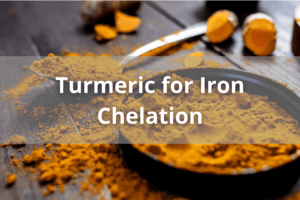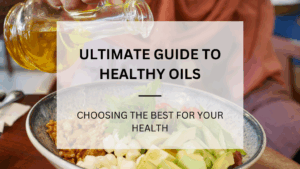Honey is one of the healthiest natural sweeteners, but not all honey is created equal. With increasing reports of adulterated and fake honey, it’s crucial to know how to choose the best raw and pure honey for your health. In this guide, you’ll learn how to identify real honey, what labels like “raw,” “organic,” and “manuka” actually mean, and how to avoid common scams.
What Makes Honey “Real”?
Store shelves today are stacked with organic, unfiltered, raw, manuka, pure, spreadable, floral, wildflower, light, and many other types of honey. But unfortunately, many of these products are fake, counterfeit, or adulterated in some way.
Raw vs Pure Honey
Most commercial honey goes through filtration and pasteurization, where it is heated to improve shelf life and appearance. However, this process destroys many of the beneficial enzymes and nutrients found in natural honey.
Raw honey is not pasteurized, filtered, or processed. It retains all of its natural components, including pollen, enzymes, and antioxidants. It may appear cloudy and textured, but that’s exactly what makes it authentic.
Pure honey, on the other hand, might be processed to remove impurities and improve appearance, which can strip away many health benefits. So if you’re looking for honey that has medicinal or nutritional value, always choose raw and unfiltered.
Did you know? According to the US Pharmacopeia Food Fraud Database, honey is the third most adulterated food in the world, behind milk and olive oil.
What is Organic Honey?
While “organic” sounds appealing, there are no globally consistent standards for certifying honey as organic. Bees can forage over several kilometers, making it hard to ensure they only visit pesticide-free flowers.
So unless the source of your honey is transparent and traceable, buying “organic” might just mean you’re paying more for a label.
Only trust organic honey if you know exactly where it was farmed and how the bees were kept.
How to Spot Fake Honey
The biggest issue today is adulterated honey that contains added sugars or syrups.
- Test 1: Matchstick Test – Dip a matchstick in honey and try to light it. If it lights easily, the honey likely has low moisture content and is pure.
- Test 2: Water Test – Drop a spoon of honey into a glass of water. Pure honey will settle at the bottom and not dissolve immediately.
- Check the label – Look for terms like “raw,” “unfiltered,” and “no added sugars.” Be wary of overly clear honey.
According to a 2011 study by Food Safety News, 76% of the honey sold in U.S. grocery stores did not contain pollen and was likely ultra-filtered.
Why Local Honey is Better
When you buy honey from local farmers, you not only support the local economy, but also gain access to a more traceable and trustworthy product. Many local producers are willing to share details about their farming methods and may even offer samples.
Commercial honey, in contrast, often travels across multiple countries before reaching your table. Some of it is even involved in what’s known as “honey laundering” — blending and mislabeling honey for profit.
Google “Honeygate” to learn more about the largest honey fraud case in U.S. history.
Is Dark Honey Healthier?
Honey ranges in color from light golden to dark amber. But does color matter?
According to research published in the Journal of Apicultural Research, darker honey contains more antioxidants compared to lighter varieties. Antioxidants help combat free radicals, reduce inflammation, and support immune function.
Dark honey varieties like buckwheat and manuka are known for their high antioxidant content and richer flavor.
If you’re switching from filtered honey to raw honey, give yourself time to adjust to the stronger taste. It’s worth it.
Also, avoid honey that is too clear. That’s a sign it has likely been heated or overly filtered. Real honey should be a little cloudy and viscous, sometimes with particles of pollen.
My Experience Using Honey for Thalassemia
I have Thalassemia Major, a serious blood disorder, and have been taking honey and black seed oil regularly for many years. I believe that raw honey has been instrumental in boosting my immunity and even improving my hemoglobin levels.
While there’s limited direct research connecting honey with Thalassemia management, honey is known for its anti-inflammatory, antioxidant, and immune-boosting properties—all of which are beneficial in managing chronic health conditions.
I have also been taking some supplements for natural iron chelation and other dietary supplements and vitamins that I feel are necessary for any thal warrior. You can check them out by clicking on the links.
Conclusion: The Best Honey to Buy
Honey is one of nature’s finest foods and medicines. Unfortunately, it has become a commercial product that’s often diluted or faked. If you want to experience the real benefits of honey:
- Choose raw and unfiltered honey
- Buy locally produced honey whenever possible
- Prefer darker varieties for more antioxidants
- Avoid overly clear or cheap honey that looks too perfect
If you can’t find a local farmer, I recommend Nature Nate’s Pure, Raw and Unfiltered Honey (affiliate link) for daily use. It’s traceable, affordable, and genuinely raw.
If you’re using honey as a health remedy, consider Manuka Honey (affiliate link). Though expensive, it’s certified and traceable right back to the hive.
Don’t be fooled by fakes.
FAQs
Should I buy raw honey or pure honey?
Raw honey is better. It’s unprocessed, unpasteurized, and retains its natural nutrients. Pure honey might be filtered or heated, reducing its health benefits.
How can we check pure honey at home?
You can try the matchstick test or the water test. However, the most reliable method is to buy from a trusted local source.
Does real honey evaporate?
No, real honey does not evaporate. It can crystallize in cold weather and caramelize when heated, but it won’t evaporate like water.



